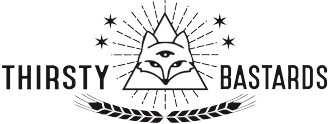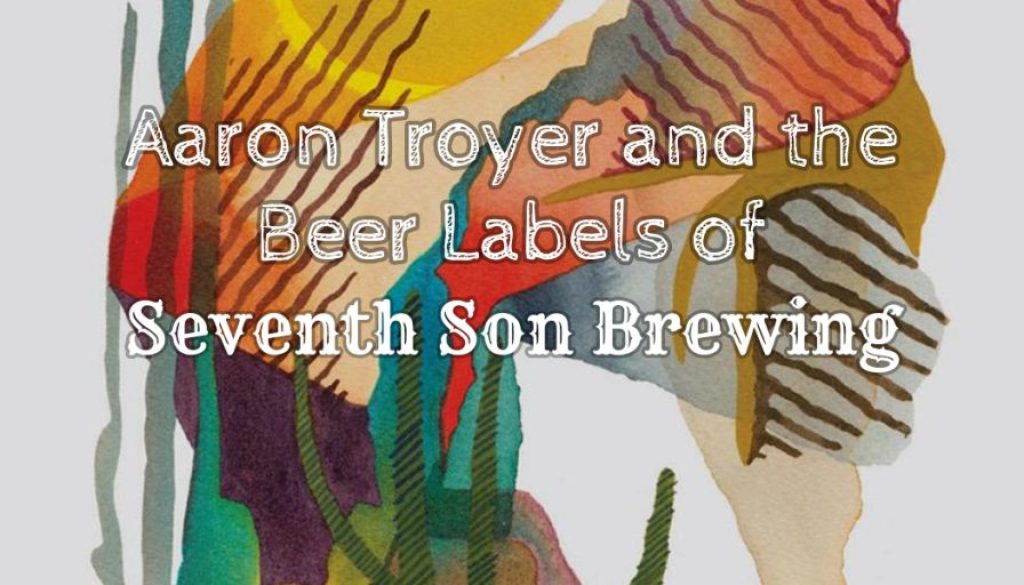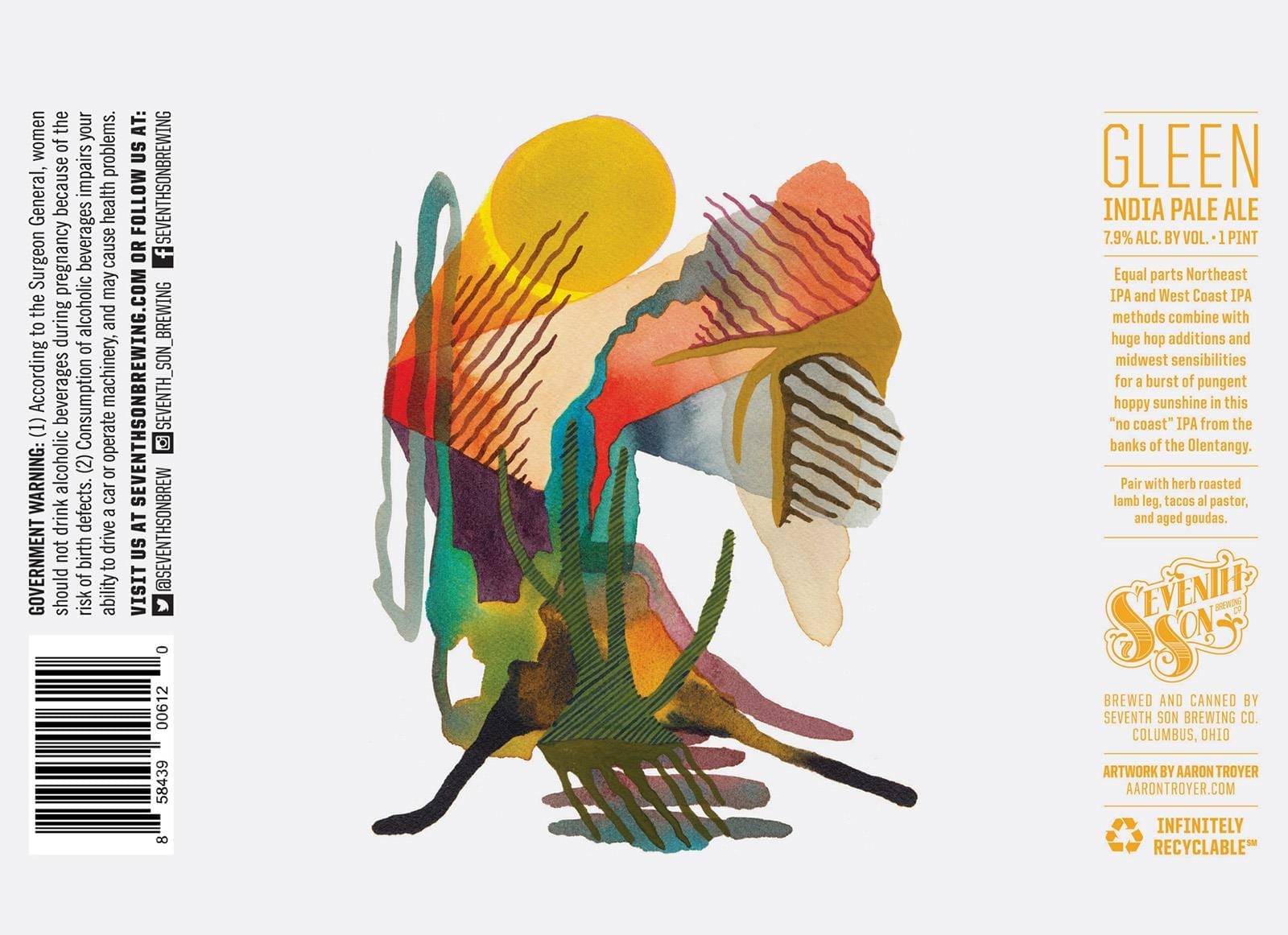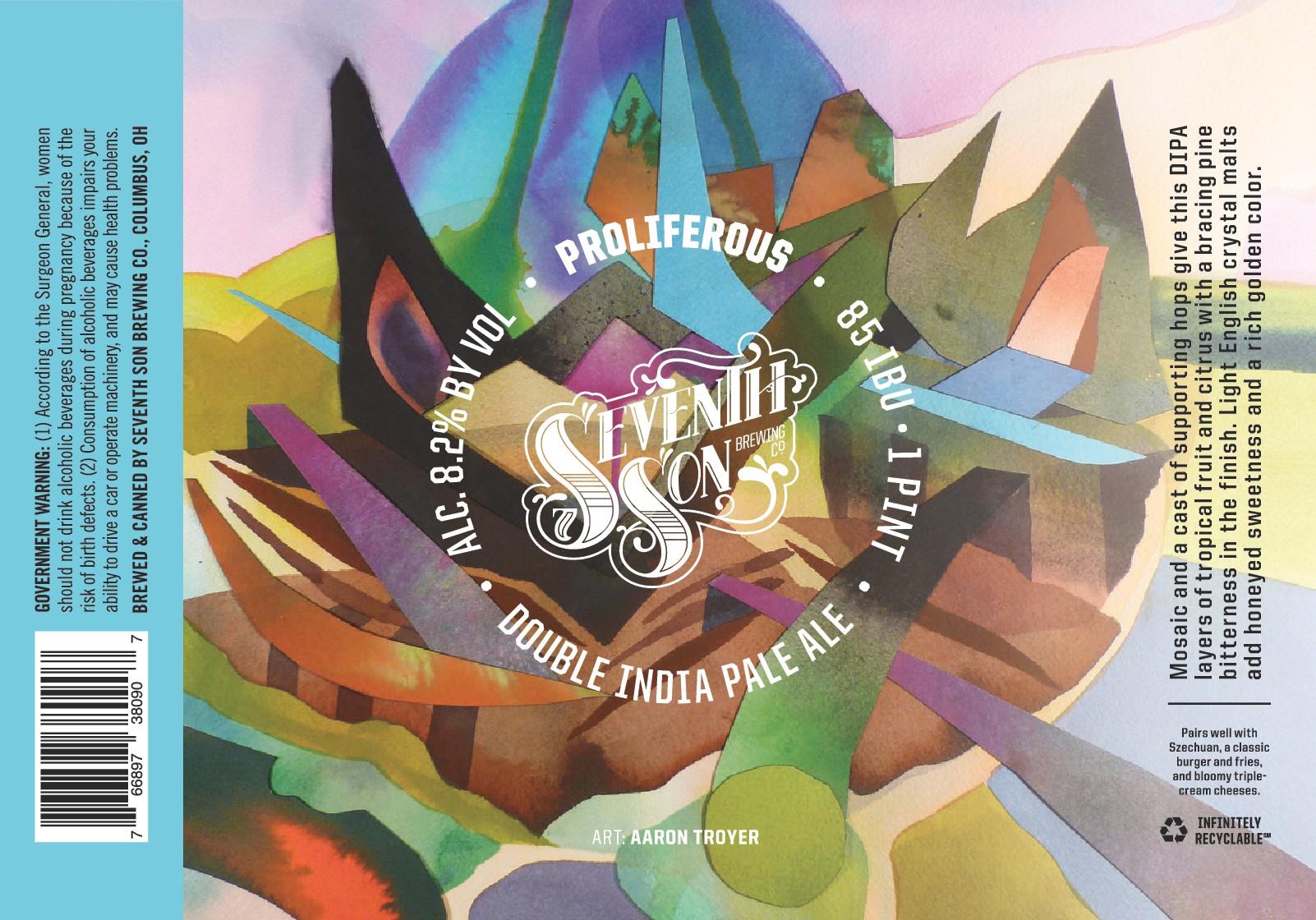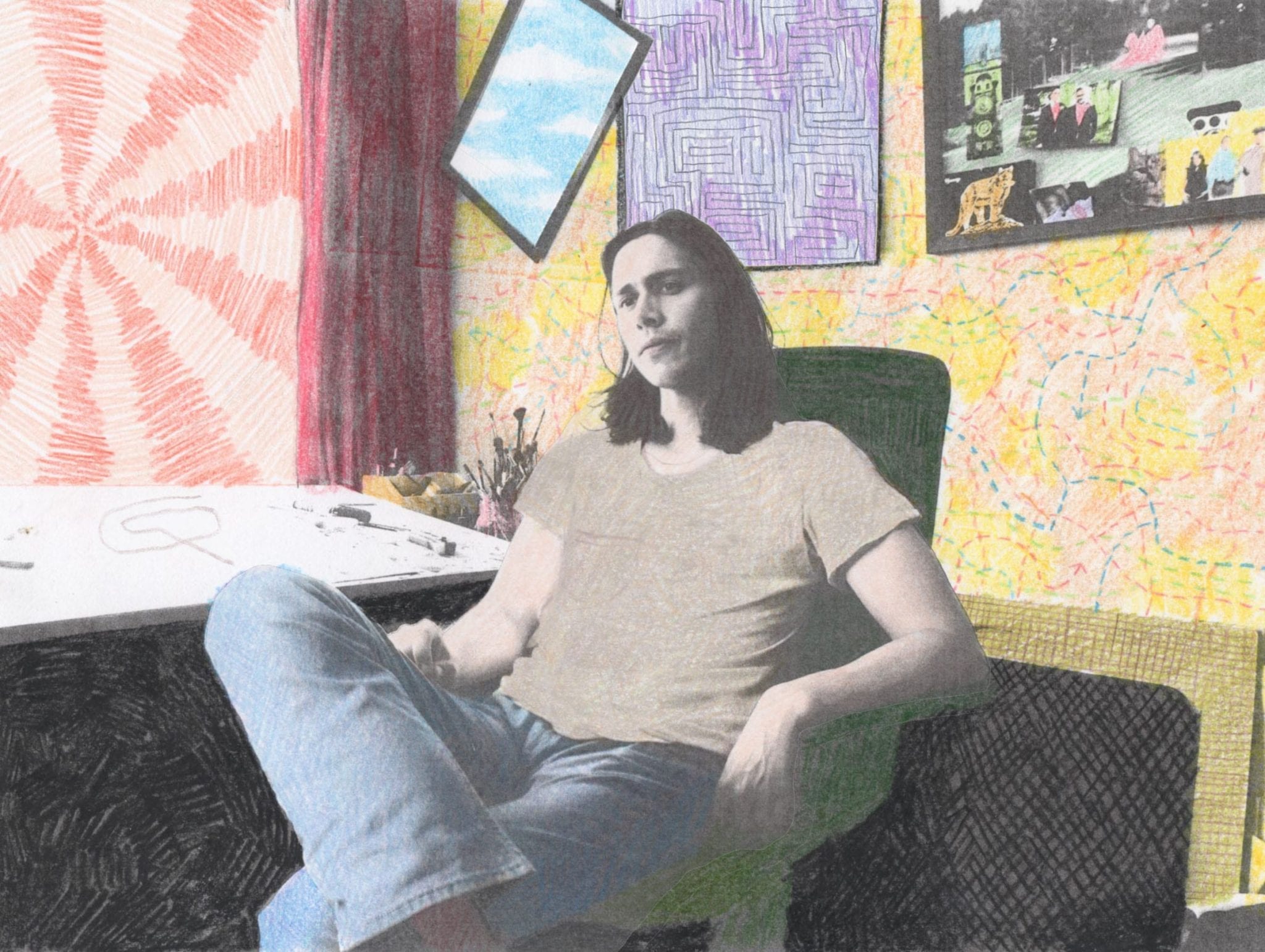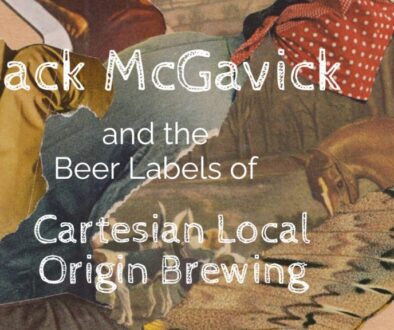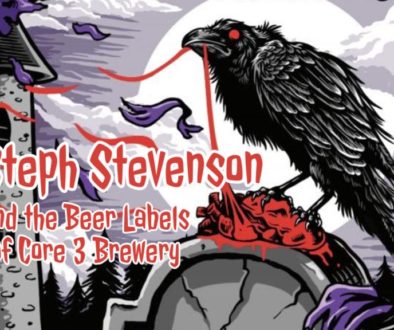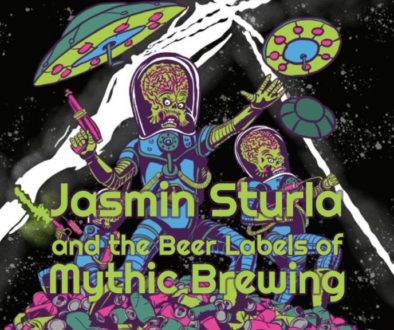Most beer labels feature representational art. It’s just the nature of the beast (and sometimes, it IS a beast!). When Maplewood names a stout “Morbidly Obese Pug”, you already have a pretty good idea of what’s going to appear on the label.
That said, there’s room on the shelves for abstract beer label art. Abstract art that sells! I’ve featured art of this nature from Upland Brewing and TO ØL. Do yourself a favor and take the time to give these labels a good look the next time you visit your local bottle shop.
Aaron Troyer makes such art for the labels of Seventh Son Brewing in Columbus, OH.
Gleen
Thirsty Bastards: My favorite label you’ve done for Seventh Son is Gleen? Can you tell me the story behind its conception?
Aaron Troyer: Jen and Collin both own some of my work, and Collin reached out to me because he wanted to use another piece of my art for a new beer.
I’ve done one other can for Seventh Son (Proliferous), which quickly became the most popular piece that I’ve ever made. Collin originally wanted to use an older painting for the can. They wanted something that was bright and summery, but the piece he chose was a bit older and I had a more recent piece that I thought would be a better fit. It had a bit of a southwestern vibe, and they agreed that it made for a good visual representation of the beer.
Jen Burton: I’ve known Aaron since 2005. He worked in the kitchen of a bar where I worked front of the house. Great dude. Amazing attitude and sense of humor. He’s a terrific artist who works with his heart and gut. Solid human!
TB: What is your favorite label you’ve done so far for Seventh Son and why?
AT: I definitely prefer the Gleen can. Like many artists, I tend to prefer my current creative direction over older work that I’ve done. That being said, I also think that the Gleen composition works better on a can.
TB: How did you get started making labels for Seventh Son?
AT: Jen and I worked together a long time ago and we’ve kept in touch over the years. It’s been pretty awesome to see her go from serving at a bar to being a big city beer boss.
I’ve been selling art prints at the Columbus Flea for years, which uses Seventh Son Brewery as it’s primary venue. Jen has always had kind things to say about my work and is an all-around great person.
A few years ago, she asked me to send her some images that might look good on a beer can. I sent a few images of recent work and promptly forgot about the project. Nine months later, Jen texted me a picture of the Proliferous can and told me to come get my check (and a bunch of free beer!). At the time, it was supposed to be a limited run, but it became pretty popular and they still brew it regularly.
Abstract Art and Selling Beer
TB: In your opinion, what else makes for a good abstract beer label?
AT: I really like how Seventh Son uses a variety of local artist with a wide range of styles to decorate their cans. From the figurative watercolors of Meagan Alwood-Karcic and natural illustrations of Will Fugman, to the playful drawing of Evan Wolff, they do a great job of curating local artists with unique styles.
I think a lot of breweries/companies worry about maintaining a signature “look” to create a neatly-defined brand, which I think is kind of boring. The people at Seventh Son seem to be more focused on pushing the boundaries of what a beer label should look like while supporting local artists and friends. I think they took a bit of a gamble using my abstract work on their cans, but I think it worked out pretty well. There are so many beers out there nowadays, it’s important to try and use unconventional designs to stand out.
Art and Process
TB: Where are you from and where did you learn to be an artist?
AT: I grew up in Mansfield, Ohio and have always been passionate about art and music. I studied fine art in college and have been making primarily abstract work on paper for the last 10 years or so.
TB: Can you tell me a bit about your process? Are you all digital? Traditional? Mix of both?
AT: I try to stay away from computers, for the most part, when making art. They are wonderful machines for documenting work, but I never really got into digital art/design.
My process involves building upon layers of watercolor, ink washes, and gouache. Over the last few years, I’ve incorporated collage elements more and more into my work.
TB: What other art do you make?
AT: I’ve played in a lot of bands and, in turn, have done lots of flyers and album art (too many to name). Other than that, I really just focus on evolving my approach to art while trying to maintain a distinct style.
I work full-time as a teacher, so I don’t really have to hustle with my art to make a living. This gives me the freedom to experiment and be very lazy, as far as networking/rubbing elbows goes.
TB: How can your fans find you and your work? Can they buy your art?
AT: Everything is for sale (this is networking, right?)
